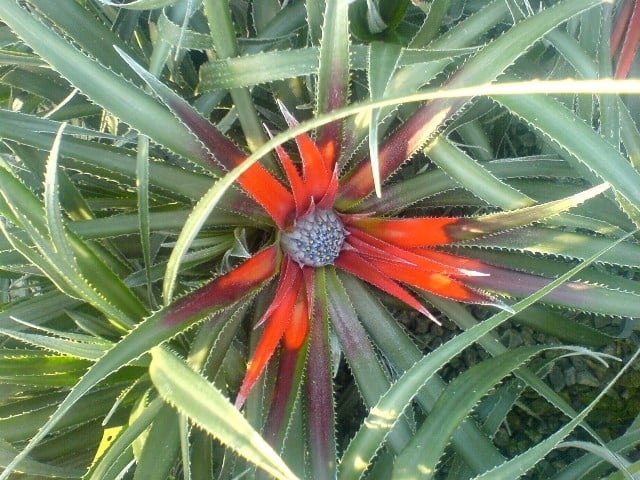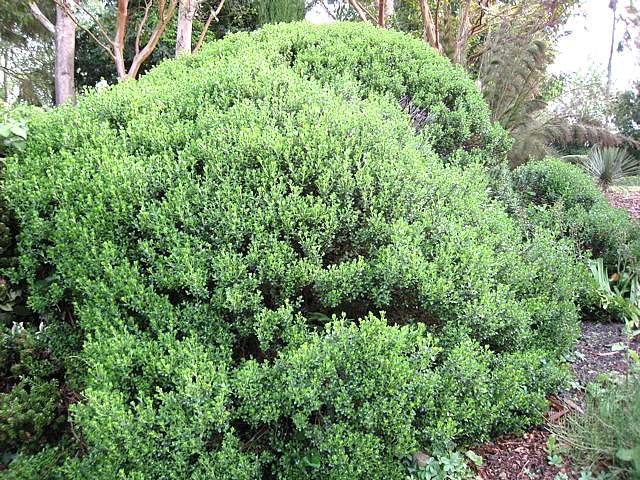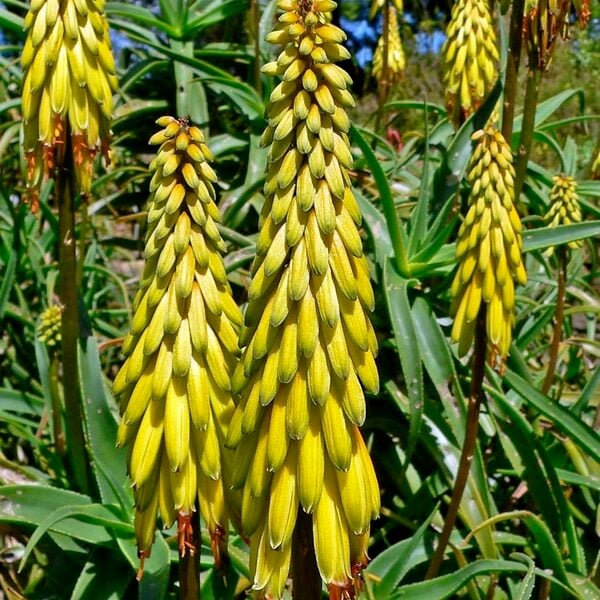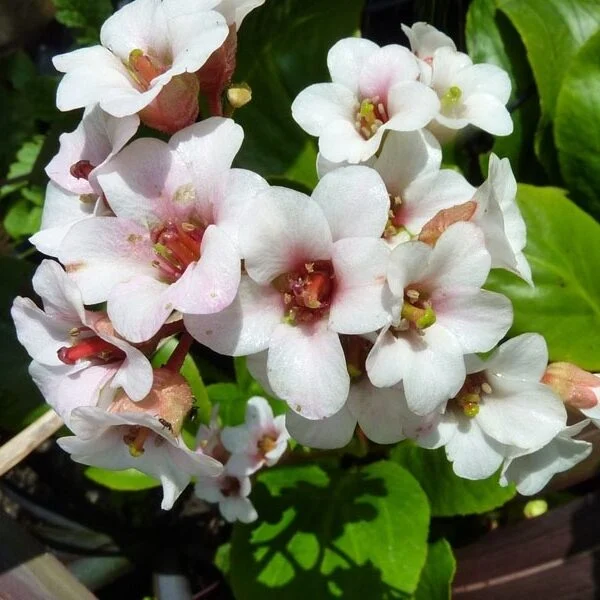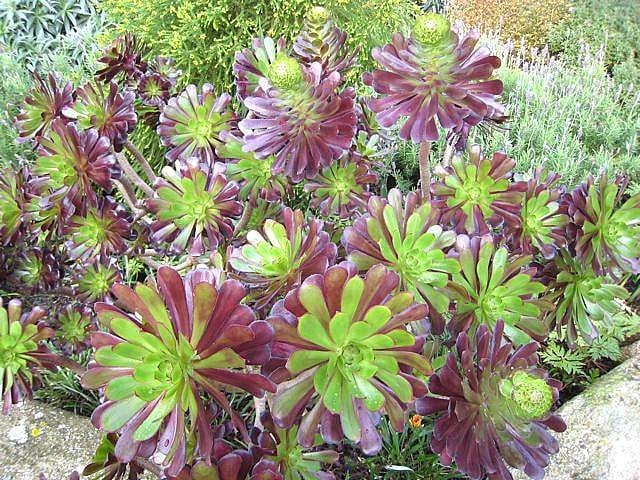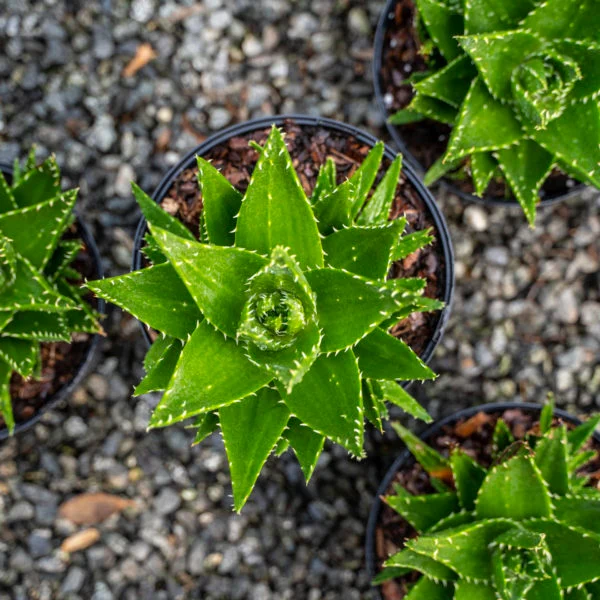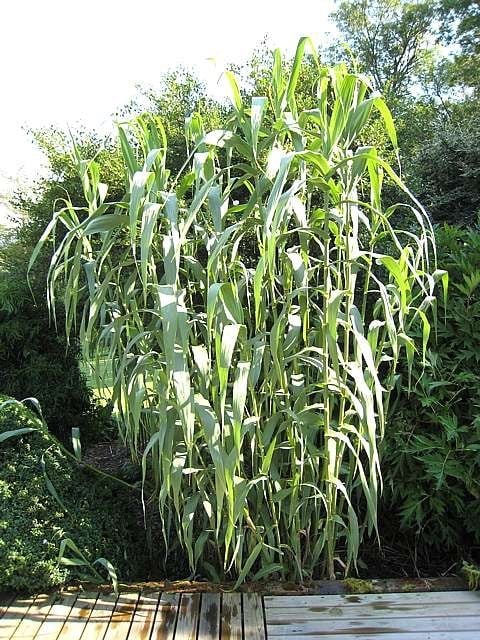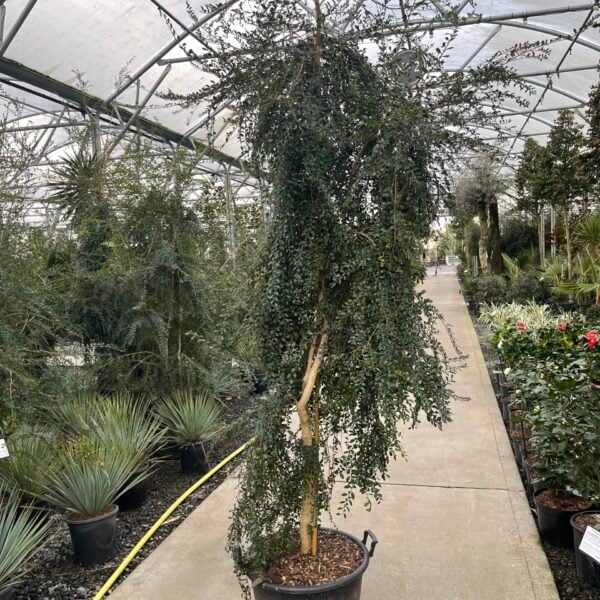Fascicularia pitcairnifolia (Big Baboon's Bottom)
An exotic pineapple relative. Flowers of iridescent blue and post office red (a baboon’s bottom). Being a bit of a bromeliad, it seems to enjoy being in a pot. 1.5ft x 1.5ft Please contact us for stock availability and sizes.

Hardiness level Red
Below is the description under the closely related Fascicularia bicolor. The thing about this one is that although it's less hardy (only suitable for seaside gardens and central London), it's also bigger and more voluptuous and more exotic. The flowers also have similarities to baboon's bottoms but even more so. Being bromeliads, they seem to get much of their moisture and nourishment from thin air so these are happier in a pot that anything we've ever come across. Imagine an exotic palm in a pot with these encircling it and reaching out over the edge of the pot. A fine sight.
The specific name 'pitcairnifolia' refers to 'having a leaf like' a plant called Pitcairnia which isn't even endemic to Pitcairn Island. Sorry to report that Fascicularia pitcairnifolia has nothing to do with Pitcairn Island, the Mutiny on the Bounty, Captain Bligh, Fletcher Christian or Marlon Brando.
Grows anywhere - in sun or shade. It's a bromeliad so most of its close relatives live as epiphytes in trees in Central America so - given a bit of encouragement - will this. We've had one growing in the stump of the branch of an old oak for many years. It's in deep shade so the leaves become huge and the whole plant from a distance has a spherical look. Extremely exotic and not what one expects in a Sussex wood. It forms clumps in the ground and flowers in the centre - electric blue and red. Baboon's bottoms get mentioned a lot. This is the hardiest of all the bromeliads and comes from the high Andes in South America. When you see it flower, you'll understand why it's also related to the pineapple. Each rosette grows to about 1ft across - more if in deep shade. Not surprisingly, you could probably leave this in a pot for years.
Propagated by us by division.
Additional Information |
|
|---|---|
| Soil Type | |
| Light | |
| Plant Type | |
| Continent of Origin | |
| Specialist Plants | Grown by Us, House Plants/ Indoor Plants, Rare & Unusual (Collectables) |
| Features | |
| Situation | Coastal, Conservatories, Mild City Gardens, Plants for Pots, Seaside, Sheltered Garden |
| Flower Colour | |
| Hardiness | |




